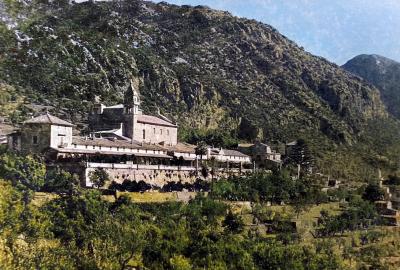In what ways do traditional terraced farms contribute to Mallorca’s agricultural landscape?
Similar Topics
traditional terraced farms
mallorca agriculture
dry stone walls
soil erosion prevention
mediterranean farming
crop diversity mallorca
sustainable farming techniques
mallorca rural heritage
Traditional terraced farms play a significant role in shaping Mallorca’s agricultural landscape, providing a unique blend of functional and aesthetic value that has evolved over centuries. These terraces, often constructed from dry stone walls, transform the island’s naturally hilly terrain into manageable, flat plots ideal for cultivation. This method allows farmers to maximize arable land on slopes that would otherwise be unsuitable for farming. By creating these stepped levels, terraces help prevent soil erosion and improve water retention, which is particularly important in Mallorca’s Mediterranean climate where water can be scarce.
The terraces are typically planted with a variety of crops, including olives, almonds, vines, and figs, contributing to Mallorca’s rich agricultural biodiversity. Beyond their practical benefits, these terraces have become a defining characteristic of the island’s rural scenery, offering visitors picturesque views and a tangible link to Mallorca’s farming heritage. The dry stone walls that form these terraces are crafted without mortar, showcasing traditional techniques that have been passed down through generations. These structures not only support agriculture but also promote sustainability by blending harmoniously into the natural environment.
Furthermore, terraced farms help preserve Mallorca’s cultural identity by maintaining traditional farming practices that emphasize harmony between human activity and nature. They serve as living examples of how communities adapted ingeniously to challenging geographical conditions, ensuring a steady food supply while also conserving natural resources. For travelers and locals alike, the terraces represent a connection to the island’s past, offering insight into the resilience and resourcefulness of Mallorca’s agricultural communities. In essence, these terraces are more than just farmland—they are enduring symbols of Mallorca’s agricultural legacy and rural charm.
The terraces are typically planted with a variety of crops, including olives, almonds, vines, and figs, contributing to Mallorca’s rich agricultural biodiversity. Beyond their practical benefits, these terraces have become a defining characteristic of the island’s rural scenery, offering visitors picturesque views and a tangible link to Mallorca’s farming heritage. The dry stone walls that form these terraces are crafted without mortar, showcasing traditional techniques that have been passed down through generations. These structures not only support agriculture but also promote sustainability by blending harmoniously into the natural environment.
Furthermore, terraced farms help preserve Mallorca’s cultural identity by maintaining traditional farming practices that emphasize harmony between human activity and nature. They serve as living examples of how communities adapted ingeniously to challenging geographical conditions, ensuring a steady food supply while also conserving natural resources. For travelers and locals alike, the terraces represent a connection to the island’s past, offering insight into the resilience and resourcefulness of Mallorca’s agricultural communities. In essence, these terraces are more than just farmland—they are enduring symbols of Mallorca’s agricultural legacy and rural charm.
🧩 Related Questions
Related Question
Are there any regional variations of sopes found in Mallorca?
Related Question
How do the Serra de Tramuntana mountains influence the types of plant species found on the island?
Related Question
What role do desalination plants play in meeting the water demands of Mallorca’s tourism industry?


